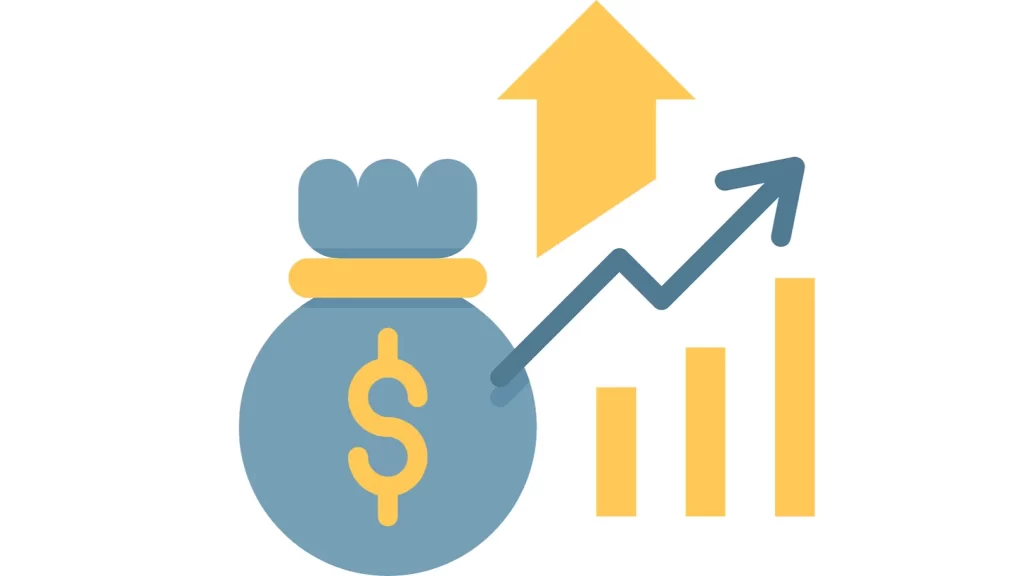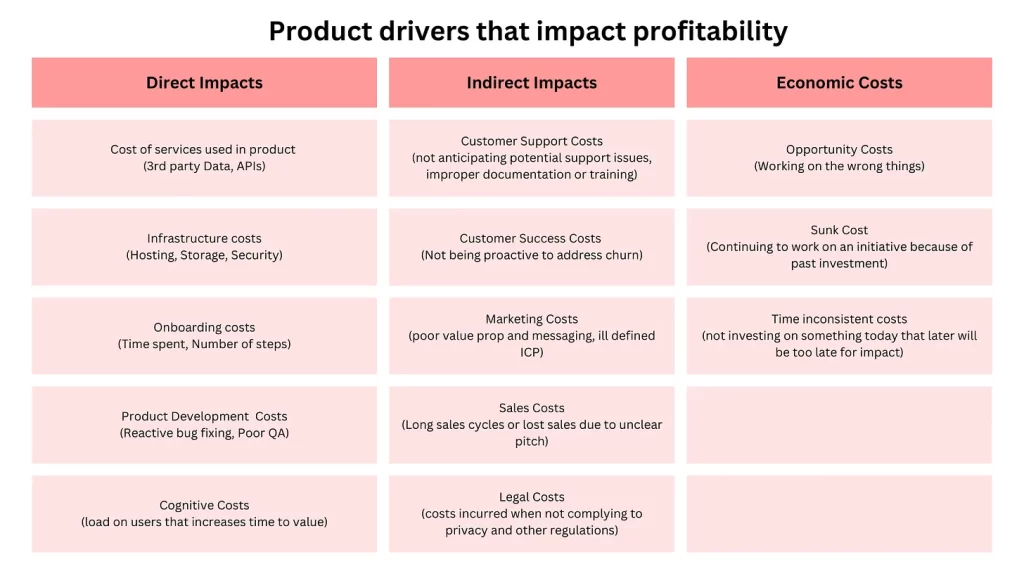As a PM, you can contribute to making your product profitable
Today we are going to discuss how to build a products that generates revenue in a profitable manner.
We will discuss
- Importance of profitability
- Decisions that impact profitability
- Your responsibility as a PM to improve profitability

Let me start with a recent incident.
I was doing a money transaction on a banking application. As part of the transaction, I was not able to complete a specific step. Since I am bit techie, I tried things I knew like clearing cache, incognito mode etc. Nothing worked. Maybe the servers are overloaded. I tried the next day and the same problem.
I called up the support line and asked me if my pop-up blocker was switched on in the browser. I said yes. I switched off the pop-up blocker and the transaction went through.
If a tech person like me was not able to figure this out, imagine the number of people who would’ve called support to complete the transaction. If thousands of people are calling on a daily basis, then it’s a significant cost that could have been avoided. This feature itself may be generating revenue or fees for the bank but it’s coming at a significant cost.
This is called cost of a feature. These are the kind of cost that you as a PM should be aware of to make your product profitable. Now, there are many factors that can go into profitability and others in the company should be responsible for them as well. For example, finance is responsible for interest costs, or real estate or taxes. You don’t have control on them.
But there are many areas that you can control and manage as a PM.
Importance of profitability
As illustrated in my example above, managing costs is equally important for a business. A company that is generating revenue but not profits will be valued lower and may have trouble attracting investments. Also, it will be hard for the company to pay for bonuses or salaries or invest in new initiatives.
Some startups will optimize for revenue and not profits. You may have heard stories about Amazon not generating profits for years. In the early years you want to grow as many customers as possible and hence you invest your cash on sales and marketing. That’s a company decision.
However, even in these early stages, the product itself will be profitable from a unit economics perspective. The company itself may not be generating profits as a whole but the individual product likely generate positive gross margin. Occasionally some companies will have negative gross margins in order to attract customers early on. That’s fine short term, but eventually the unit economics has to work.
Decisions that impact profitability
Direct Impacts
Indirect Impacts
Economic Costs
Let’s see some examples within each.

Direct Impacts
1. Costs of services
If your product uses 3rd party data, services or APIs, then you are incurring direct costs. As a PM, you need to model these costs and make sure that they make economic sense. Let’s say you have a sales lead enrichment product which requires buying data from 3rd party via APIs. You charge $ 15 per user but the data cost is $ 20. At a unit level, this product is not profitable. So your options are to look for alternate sources or find some other mechanism to reduce cost.
Look at the all the services consumed such as email services, SMS services, integrations, single signon etc and see what can be optimized on an ongoing bases. Keep a tab on pricing changes from 3rd parties.
2. Infrastructure costs
Product is served to customer using various technologies such as hosting, servers, databases, security. These are generally managed by engineering and cloud development teams. They have the ability to dial up or down the infrastructure. Your job as a PM is to make sure the product is not compromised for performance, scalability or security. Otherwise you will end up incurring a bigger expense later or even losing customers.
3. Onboarding costs
4. Product development costs
Your product processes also has a big impact on profitability. For example, if you don’t have a proper QA process, then some bugs will come up repeatedly. This eats your engineering cycles and delays releases.
Another example is how you design your specifications. If it takes time for engineering to understand your stories, that also delays development cycles. Being clear and articulate is essential for all stakeholders to understand your product work.
Many product teams lack an operating system unlike their brethren in engineering or release management. Even mundane things like gathering usage data takes a long time. Something that should be on your fingertips. A waste of time on mundane things also makes the product development process inefficient.
Spending way longer to build is also expensive. This typically happens when there is a lack of proper product discipline. Teams will spend time in circles, endless meetings, executive overviews, layers of indecision, approvals and so on.
5. Cognitive Costs
When a user uses your new product or feature, they have to relearn a new way of doing things. That puts a cognitive load on them. In some cases it is acceptable simply because its a new technology or a new process in the company. Putting a cognitive load on users delays their time to value. It could also delay overall rollout of your product across the company, which could result in churn. Not to mention the added customer success and support costs who may have to hand hold customers.
Indirect Impacts
1. Customer support costs
Not preparing support on how your product works and how to respond to customers issues is a huge expense. More if the support is a phone call. As a PM, you need to anticipate any support issues, and train the support team so that they can reduce the time for each issue.
An area to reduce cost is to look at frequent support issues. Where is support spending more time to resolve issues. Then find a way to optimize the product that helps reduce the support tickets or even better, add self service so that customers can resolve themselves.
Even more important, anticipate what kind of issues a user might face. Then prepare the documentation, FAQ, Videos etc so that a user is self sufficient if they have an issue.
Avoiding support tickets as far as possible is the best strategy.
Also consider user training videos or hands on sessions where applicable and help reduce support costs.
2. Customer success costs
Usually there are playbooks for customer success teams to follow as they attempt to renew customers. As a PM, you can help them identify cohorts of customers who may likely churn. You can look at churn data and see what the behavior pattern of users was. Then proactively identify customers who exhibit similar pattern.
Also, train the CS teams on how best customers can extract value. Allow them to introduce new products or features as time comes. This will enable CS teams to create satisfied customers and reduce churn.
3. Sales and Marketing costs
Sales and Marketing includes your sales team, marketing team, demand generation activities, events, advertisements, promotions, discounts etc. Indirectly, product managers can also help reduce the cost of sales and marketing by bringing value clarity. When the value of the product is clear, it allows for clear messaging and helps the sales team to position the product better. It can help reduce sales cycle and remove customer objections.
Economic Costs
Economic costs are non cash costs but do have impacts on profitability.
1. Opportunity Cost
Opportunity cost is a very important economic concept that every PM should learn about. Its the cost for the next best alternative.
Let’s say the product team decide to work on something which they think is what the customer wants. But later you realize that thats not what we should have built but this other thing which really would have moved the needle.
Back to the drawing board.
A good product team should be careful with what they are building and get it right, perhaps even test it out first. Granted, often times product fails but having a structured process minimizes the risk. As a PM, you need to keep thinking of de-risking your product.
2. Sunk costs
This is also an economic concept that you should be aware of. Product teams will continue to work on initiatives just because a lot of work has already been done and significant investment has been made. But the past investment should not be a deciding factor if the initiative should continue. The decision should be based on the potential for impact given todays assumptions and conditions.
Continuing to work on something when it does not make sense is costly and wastes development cycles.
3. Time inconsistent costs
Basic idea is that if you make a certain decision now then it is difficult to compensate over time. A personal example could be not investing your savings early in your life. By the time you are older when you need money, you would have lost out on all that compounding. It’s too late.
In product, one example is not investing in a robust product analytics. By the time you need that data later for analysis or understanding usage, it is too late. You can start collecting now, but now you have to wait for the next decisions.
Many such examples exists that can have irreversible ramifications.
Conclusion
As you can see, there are many areas that you can look to optimize and ensure you are building products that generate profits. There are many more drivers like these and they will depend on your industry and stage of your company. Be aware of these drivers and then make a plan to proactively address them.

